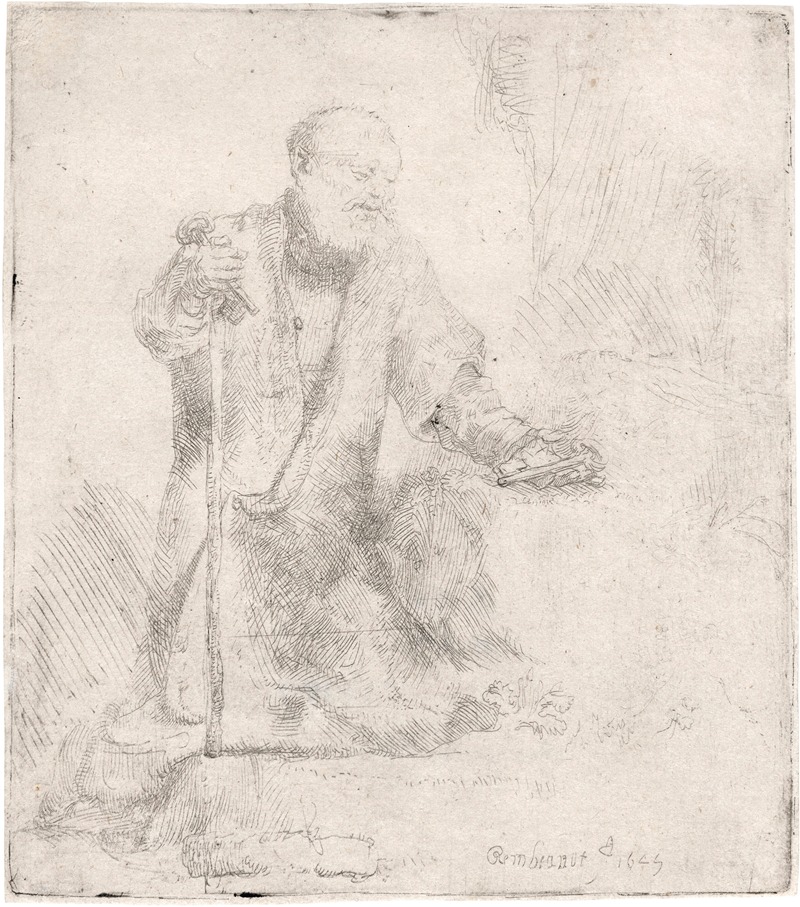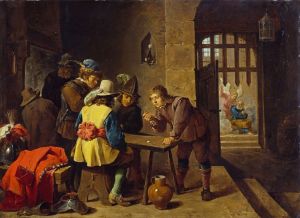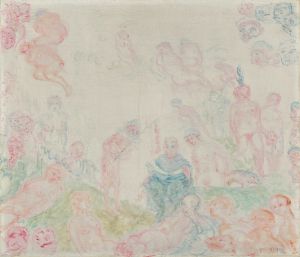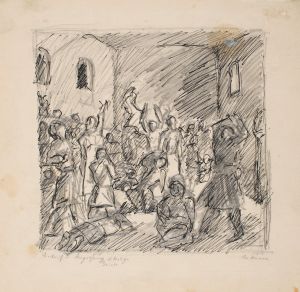
Saint Peter in Penitence
A hand-painted replica of Rembrandt van Rijn’s masterpiece Saint Peter in Penitence, meticulously crafted by professional artists to capture the true essence of the original. Each piece is created with museum-quality canvas and rare mineral pigments, carefully painted by experienced artists with delicate brushstrokes and rich, layered colors to perfectly recreate the texture of the original artwork. Unlike machine-printed reproductions, this hand-painted version brings the painting to life, infused with the artist’s emotions and skill in every stroke. Whether for personal collection or home decoration, it instantly elevates the artistic atmosphere of any space.
"Saint Peter in Penitence" is a painting by the renowned Dutch artist Rembrandt van Rijn, created during the Baroque period. Rembrandt, known for his masterful use of light and shadow, as well as his profound ability to capture human emotion, painted this work in the mid-17th century. The painting is a poignant depiction of Saint Peter, one of Jesus Christ's apostles, in a moment of deep remorse and reflection.
The subject of the painting, Saint Peter, is a significant figure in Christian theology. He is often remembered for his close relationship with Jesus and his role as a leader among the apostles. However, Peter is also known for his denial of Jesus, an event that is recounted in the New Testament. According to the Gospels, Peter denied knowing Jesus three times before the rooster crowed, fulfilling a prophecy made by Jesus. This moment of denial and the subsequent realization of his actions led to Peter's profound remorse and penitence, which is the central theme of Rembrandt's painting.
In "Saint Peter in Penitence," Rembrandt captures this intense emotional moment with his characteristic use of chiaroscuro, a technique that contrasts light and dark to create a sense of volume and depth. The painting shows Peter with tears in his eyes, his hands clasped in prayer or supplication. The light falls dramatically on his face, highlighting his expression of sorrow and repentance. This use of light not only draws attention to Peter's emotional state but also serves to symbolize the spiritual enlightenment and forgiveness that follows true repentance.
Rembrandt's ability to convey complex human emotions is evident in this work. The painting does not rely on grand gestures or elaborate settings; instead, it focuses on the raw, human aspect of Peter's remorse. This approach is typical of Rembrandt's portraiture, where he often sought to reveal the inner life of his subjects through subtle expressions and careful attention to detail.
The painting is part of a larger tradition of religious art that seeks to inspire reflection and empathy in the viewer. By choosing to depict Peter in a moment of vulnerability, Rembrandt invites the audience to contemplate themes of forgiveness, redemption, and the human capacity for change. This focus on personal transformation and spiritual introspection is a hallmark of Rembrandt's religious works.
"Saint Peter in Penitence" is housed in the Hermitage Museum in Saint Petersburg, Russia. The museum's collection includes several works by Rembrandt, making it one of the most significant repositories of his art. The painting is an excellent example of Rembrandt's skill in rendering the human condition and his deep engagement with biblical narratives.
Overall, "Saint Peter in Penitence" stands as a testament to Rembrandt's mastery of emotional expression and his ability to convey complex theological themes through the medium of paint. The work continues to be admired for its technical brilliance and its profound exploration of human emotion and spirituality.


















